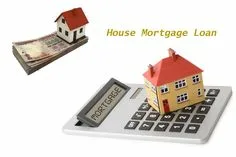Understanding Mortgage Rates: An In-Depth Guide
Introduction Mortgage Rates
Navigating the world of mortgage rates can be daunting for many prospective homeowners. As a critical factor in the overall cost of purchasing a home, understanding the intricacies of mortgage rates is essential for making informed financial decisions. In this comprehensive guide, we will delve into what mortgage rates are, how they are determined, and the various factors that influence them. This article aims to equip you with the knowledge necessary to secure the best possible mortgage rate for your financial situation.
What Are Mortgage Rates?
Mortgage rates refer to the interest rates charged on a mortgage loan. These rates determine the cost of borrowing money to purchase a home and are expressed as a percentage of the loan amount. The mortgage rate you receive impacts your monthly mortgage payments and the total amount you will pay over the life of the loan.
Fixed vs. Adjustable Mortgage Rates
There are two primary types of mortgage rates: fixed-rate mortgages and adjustable-rate mortgages (ARMs).
- Fixed-Rate Mortgages: With a fixed-rate mortgage, the interest rate remains constant throughout the life of the loan. This means your monthly payments will remain the same, providing stability and predictability in your budgeting.
- Adjustable-Rate Mortgages (ARMs): An ARM has an interest rate that can change periodically, usually in relation to an index. This means your monthly payments may vary over time. ARMs typically offer lower initial rates compared to fixed-rate mortgages but come with the risk of rate increases in the future.
How Are Mortgage Rates Determined?
Mortgage rates are influenced by a variety of factors, including economic conditions, inflation, and the policies of the Federal Reserve. Here are some key factors that affect mortgage rates:
1. Economic Conditions
The overall health of the economy plays a significant role in determining mortgage rates. In times of economic growth, demand for loans increases, which can lead to higher interest rates. Conversely, during economic downturns, interest rates may decrease to encourage borrowing and stimulate the economy.
2. Inflation
Inflation erodes the purchasing power of money over time. Lenders compensate for this by charging higher interest rates to maintain their profit margins. Therefore, higher inflation typically leads to higher mortgage rates.
3. Federal Reserve Policies
The Federal Reserve (Fed) influences mortgage rates through its monetary policy. When the Fed raises the federal funds rate, mortgage rates tend to increase. Conversely, when the Fed lowers the rate, mortgage rates generally decrease.
4. Credit Score
Your credit score is a crucial factor in determining the mortgage rate you will receive. Lenders use your credit score to assess your risk as a borrower. A higher credit score typically qualifies you for a lower interest rate, while a lower credit score can result in a higher rate.
5. Loan Type and Term
The type of mortgage and the term of the loan also impact mortgage rates. For example, jumbo loans (loans that exceed conforming loan limits) often have higher interest rates due to the increased risk to the lender. Similarly, shorter-term loans usually have lower rates compared to longer-term loans.
6. Down Payment
A larger down payment reduces the lender’s risk, which can result in a lower interest rate. Conversely, a smaller down payment may lead to a higher rate due to the increased risk to the lender.
Strategies to Secure the Best Mortgage Rate
Securing the best mortgage rate involves a combination of financial preparedness and strategic planning. Here are some tips to help you get the best rate:
1. Improve Your Credit Score
Before applying for a mortgage, take steps to improve your credit score. Pay off outstanding debts, avoid opening new lines of credit, and correct any errors on your credit report.
2. Save for a Larger Down Payment
A larger down payment can help you secure a lower interest rate. Aim to save at least 20% of the home’s purchase price to avoid private mortgage insurance (PMI) and potentially lower your rate.
3. Shop Around
Different lenders offer different rates, so it’s essential to shop around and compare offers. Obtain quotes from multiple lenders and consider both interest rates and closing costs.
4. Consider Loan Types and Terms
Evaluate different types of loans and terms to find the best fit for your financial situation. Fixed-rate mortgages provide stability, while ARMs may offer lower initial rates.
5. Lock in Your Rate
Once you find a favorable rate, consider locking it in. A rate lock guarantees the rate for a specified period, protecting you from potential increases before closing.
Conclusion
Understanding mortgage rates and the factors that influence them is crucial for making informed home-buying decisions. By improving your credit score, saving for a larger down payment, and shopping around for the best rates, you can secure a mortgage that fits your financial goals. Remember, the right mortgage can save you thousands of dollars over the life of the loan, making it well worth the effort to find the best rate possible.

